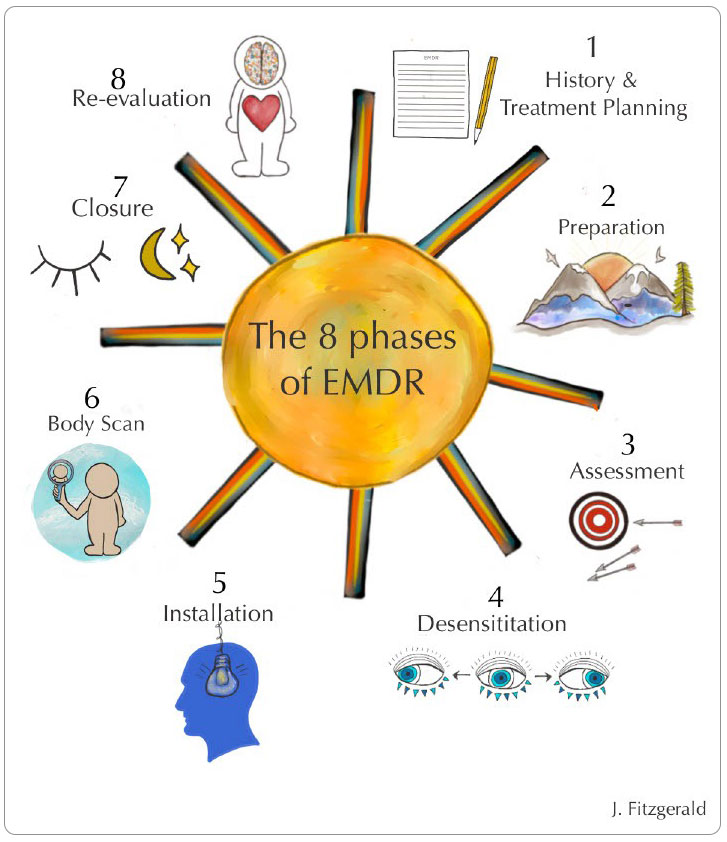EMDR Therapy
EMDR Therapy has been proven effective in helping people recover from trauma and PTSD.
Eye Movement Desensitization and Reprocessing (EMDR) Therapy is an integrative form of psychotherapy which has been extensively researched. It has been proven effective in helping people recover from trauma and PTSD. This comprehensive approach addresses the physiological storage of memory and how it informs experience. When the past is present, problems in daily living can occur.
EMDR therapy addresses past adverse life experiences in order to find relief in the present. Change is understood as a by-product of reprocessing due to the alteration of memory storage and the linkage to a more balanced, insightful understanding. Stuck negative memories, beliefs and emotions are unlocked allowing for the brain to process the experience successfully enabling symptom reduction.

Phase 1: History & Treatment Planning
- obtaining background information
- identifying suitability for EMDR treatment
- identifying processing targets from negative events in client’s life
Phase 2: Preparation
- education and resourcing
- learning imagery and stress reduction techniques
- stabilization and increasing access to positive states
Phase 3: Assessment
- selecting a target memory for processing
- stimulating primary aspects of the memory
- determining and rating a desired positive cognition using the Validity of Cognition (VOC) scale from 1-7
- rating the disturbance of the memory using the Subjective Units of Disturbance (SUD) scale from 1-10
- through approaching the memory, the aim is to reduce the disturbance and increase the positive belief
Phase 4: Desensitization
- processing the disturbing memories and sensations toward an adaptive resolution (0 SUD level)
- integration of positive insights and experiences
Phase 5: Installation
- increasing connections to positive belief networks
- reinforcing self-compassion, confidence, empowerment and emotional balance
Phase 6: Body Scan
- concentration on and processing of any residual physical sensations
- determining if you no longer feel stress or negative emotions related to the traumatic event
- process is repeated until the scan is clear
Phase 7: Closure
- if the negativity associated with the event is not fully resolved, the therapist will end the session with a containment or calming exercise
- if the event is resolved, the target memory will be reevaluated at the next session before moving on to another target
Phase 8: Reevaluation
- if the last session was incomplete, the therapist would begin again at phase 4
- if the last treatment session was complete, its effectiveness is evaluated to ensure that the disturbance level is gone and the positive belief and feelings remain
Source/Adapted from:
Shapiro, Francine and Laliotis, Deany. EMDR Training Manual. EMDR Institute. Revised 2020. p.168
